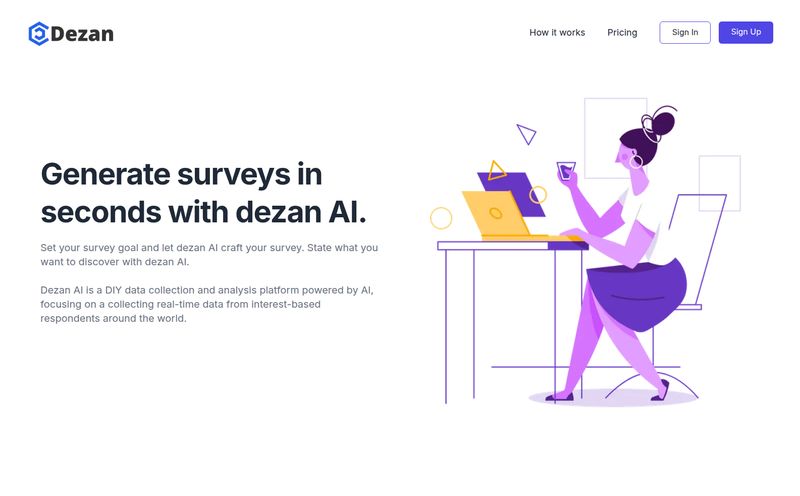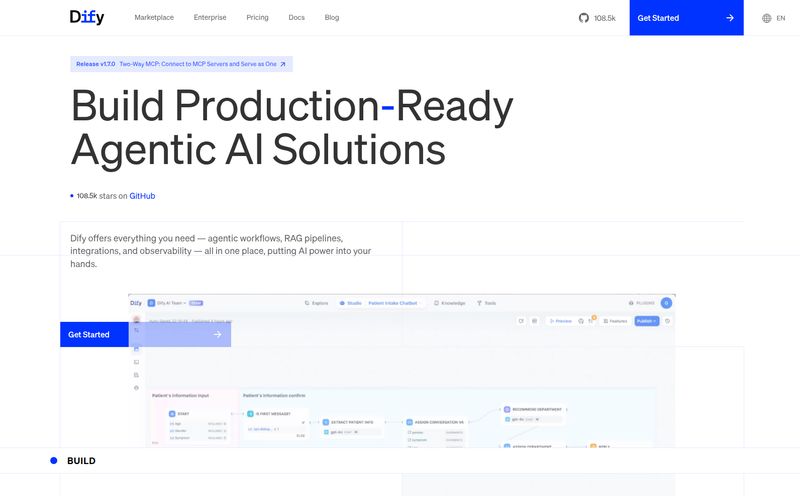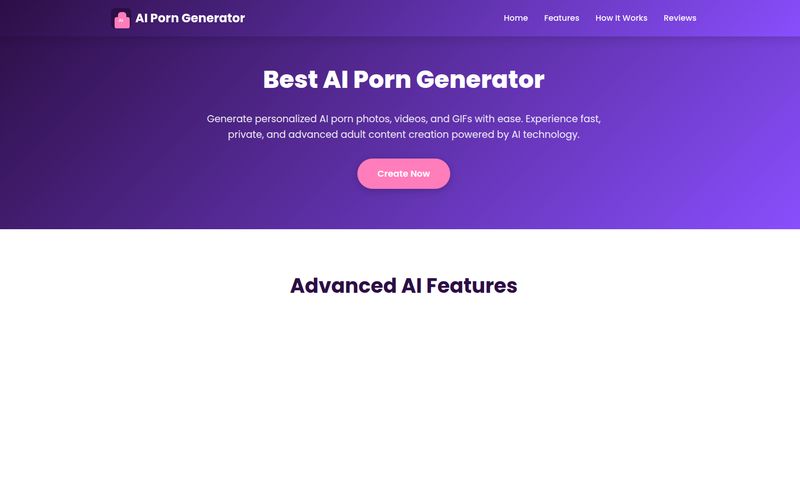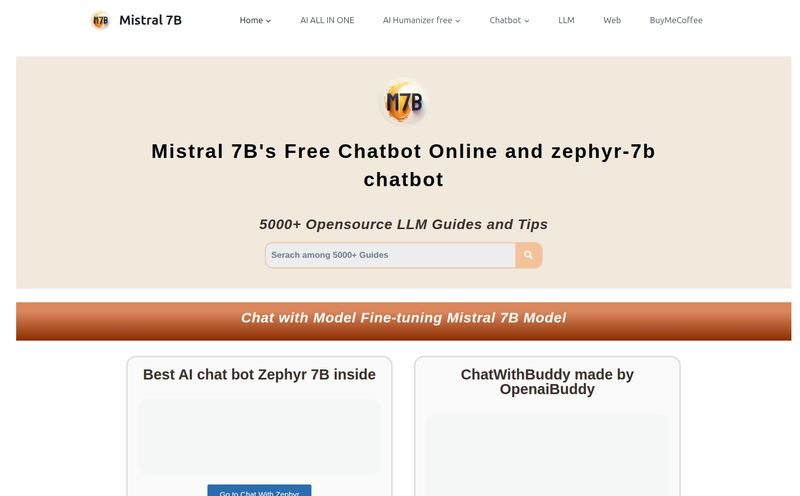If you've been in the machine learning space for a while, you’ve probably heard of Grid.ai. It was that promising platform that wanted to take the soul-crushing parts of MLOps off our plates. Well, if you’ve visited their site recently, you’ll have seen the big news: Grid.ai is now Lightning AI.
It’s more than just a new name and a slicker logo. It’s a signal, a doubling-down on a philosophy that many of us in the trenches have been screaming about for years: let us focus on the ML, not the damn infrastructure. I've spent more late nights than I'd care to admit wrestling with CUDA driver mismatches and baffling cloud permission errors. It’s a rite of passage, I guess, but one I’d happily skip.
So, is this rebranding just marketing fluff, or is Lightning AI really the answer to our collective infrastructure prayers? Let's get into it.
So, What Exactly is Lightning AI (Formerly Grid.ai)?
At its heart, Lightning AI is a platform designed to abstract away the messy, complicated, and frankly, boring parts of setting up and scaling machine learning projects. Think of it this way: building an AI model is like being a world-class race car driver. You want to be on the track, finding the perfect racing line, tuning your driving technique, and winning races. You don't necessarily want to spend your weekend forging pistons and wiring the ECU from scratch.
In this analogy, managing cloud infrastructure—the AWS, GCP, or Azure configurations—is the greasy, time-sucking engine work. Lightning AI aims to be your expert pit crew and engineering team, handing you the keys to a top-tier race car so you can just focus on the driving.
And the most important part? It’s built by the same team that created PyTorch Lightning. If you've ever used that library, you know these folks get it. They have a history of creating tools that bring sanity and structure to the chaotic world of deep learning research. That's not just a selling point; it’s a foundation of trust.
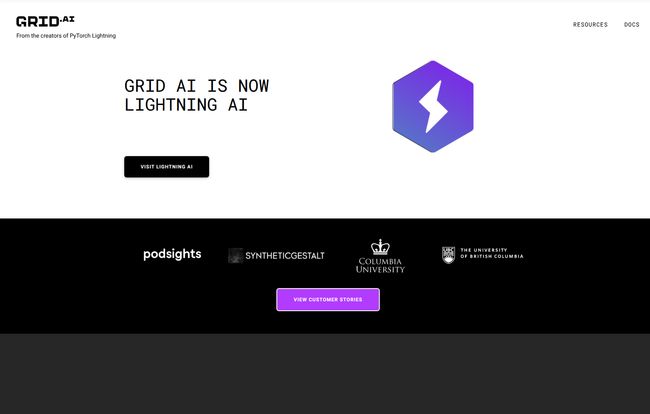
Visit Grid.ai
The Core Problem Lightning AI Aims to Solve
Let’s be honest with each other. The promise of being a “data scientist” was to uncover hidden patterns and build intelligent systems. The reality for many is becoming an unwilling, unpaid, and undertrained cloud architect. Your brilliant model works perfectly in a Jupyter notebook on your laptop, but then comes the time to train it on a bigger dataset with multiple GPUs. And the nightmare begins.
You’re suddenly dealing with:
- Dockerfiles that refuse to build.
- Python dependency hell that makes you question your life choices.
- Provisioning GPUs and trying to get them to talk to each other without throwing a tantrum.
- Setting up monitoring, logging, and artifact tracking so your experiments aren’t just lost to the digital ether.
It's a huge barrier. I've seen talented teams burn out and brilliant projects stall, not because the science was bad, but because the engineering overhead was just too high. Lightning AI steps in and says, “Stop all that. Just give us your code. We’ll handle the rest.”
What I Like About Lightning AI (The Big Wins)
I’m naturally skeptical of platforms that promise to solve all my problems. But after looking into Lightning AI and seeing who's using it, there are a few things that really stand out.
Focus on the Science, Not the Servers
This is the main promise and it's a big one. The platform is designed to let you transition from your local machine to the cloud with minimal code changes. The idea is to manage your experiments, data, and models in a unified way without having to become an expert in Kubernetes. For research labs and startups where every hour of a data scientist's time is precious, this is a massive productivity boost. You're paying to get your time back, and that's often the best investment you can make.
Built on a Bedrock of PyTtorch Lightning
I mentioned this before, but it's worth repeating. This isn’t some random startup trying to ride the MLOps wave. The team behind Lightning AI has already fundamentally improved the way a huge chunk of the community writes deep learning code. They have street cred. This deep integration means if you're already using PyTorch Lightning, the transition feels incredibly natural. It’s an extension of a workflow you already know and trust, not a whole new system you have to learn from scratch.
Real-World Proof from a Few Friends
Talk is cheap, right? But the testimonials on their site are pretty compelling. I mean, you've got researchers from places like Columbia University and the University of British Columbia. These aren't folks who are easily impressed by flashy marketing.
"I ran a 1 million+ big experiments job yesterday from the CLI. NOT A SINGLE FAILED. And I had storage issues with my shell scripts but Grid fixed that for me..." - Jesse Perla, Associate Professor of Economics at UBC
A million experiments without a single failure? Anyone who has tried to run large-scale hyperparameter sweeps knows that sounds like a beautiful dream. That kind of reliability is what separates a neat toy from a serious research and production tool.
A Reality Check: Potential Downsides
No tool is perfect, and it would be dishonest to pretend Lightning AI is. There are trade-offs to be made, and it’s important to go in with your eyes open.
The Walled Garden Effect
When you adopt a platform like this, you are, to some extent, buying into its ecosystem. It simplifies things immensely, but it also means you’re doing things the “Lightning AI way.” If you’re a hardcore MLOps engineer who loves having granular control over every single aspect of your infrastructure, you might feel a bit constrained. It’s the classic convenience vs control debate. For most, the convenience will win, but for some power users, giving up the keys to the kingdom is a non-starter.
That Initial “Huh?” Moment
While it’s designed to be simple, it’s still a new platform. There will be a learning curve. You’ll need to understand its concepts, how it structures projects, and its CLI. Based on the testimonials about its great interface, it seems the team has worked hard on this, but don't expect to be an expert in ten minutes. You'll have to invest some time upfront.
What's the Damage? A Look at Lightning AI Pricing
Ah, the question on everyone’s mind. And, as is common with these kinds of platforms, the answer is… it depends. The website doesn't have a public pricing grid with neat little boxes and features. Instead, you're prompted to choose a plan that works for you and, for Academic and Public Sector Research Labs, to contact them directly.
This is pretty standard for B2B or research-focused SaaS. It usually means pricing is based on usage (like GPU hours or credits), the number of users, and the level of support required. While I'd love a transparent pricing page, the lack of one suggests they're focused on creating custom plans for serious teams rather than chasing the hobbyist market. Expect to have a conversation with their sales team to get a quote.
Who is Lightning AI Actually For?
So, who should be seriously looking at Lightning AI?
- Academic Research Labs: This seems like a perfect fit. Labs get access to cutting-edge compute without needing a dedicated IT/DevOps team to manage it. The testimonials from UBC and Columbia back this up.
- Startups and Mid-Sized Companies: If your company is ML-driven but you can't afford a full MLOps team, this could be your solution. It lets your data scientists be data scientists.
- Individuals and Teams Prioritizing Speed: If your goal is to go from idea to trained model as fast as humanly possible, the value proposition here is enormous.
Who might it not be for? Mega-corporations like Google or Meta, who have already invested millions in building their own internal platforms (like TFX). And maybe the solo tinkerer, for whom the cost might be a barrier compared to just using a single Colab instance.
My Final Thoughts on Lightning AI
The rebranding from Grid.ai to Lightning AI feels right. It ties the platform directly to the reputation and philosophy of PyTorch Lightning, which is all about developer experience and productivity. This isn't just about managing servers; it's about changing the way we approach the entire machine learning workflow.
I’m optimistic. The industry desperately needs tools that lower the barrier to entry for building and deploying powerful AI. We need to democratize not just the models, but the means of production. If Lightning AI can deliver on its promise of a frictionless path from laptop to cloud, it won't just be a successful product—it'll be a catalyst for innovation across the entire field. And that's something to get genuinely excited about.
Frequently Asked Questions about Lightning AI
- Do I need to create a Lightning AI account to use it?
- Yes, like any cloud platform, you'll need an account to manage your projects, billing, and resources. This is how you'll track your experiments and access your work.
- What cloud provider can I use it on?
- The platform is designed to abstract the cloud provider away from you. This means you can leverage the power of major cloud providers (like AWS, GCP, etc.) without having to manage an account with them directly. Lightning AI handles that connection.
- How does billing work? Is there a minimum order?
- Billing details aren't publicly listed, which is common for enterprise-grade tools. It's likely based on your consumption of resources (compute credits, storage). You would need to contact their sales or support team to get specifics for your use case.
- Can I upgrade my plan if my team grows?
- Absolutely. Platforms like this are built for scale. You can typically start with a plan suited for a small team or a single researcher and then upgrade to a Teams or Enterprise plan as your needs grow more complex.
- Is this only for PyTorch users?
- While it's from the creators of PyTorch Lightning and has fantastic integration, the platform is framework-agnostic. You can run TensorFlow, JAX, or any other machine learning code. Its core value is in infrastructure management, not just a single framework.
Reference and Sources
- Lightning AI Official Website
- PyTorch Lightning Official Website
- Grid.ai (now redirects to Lightning AI)
